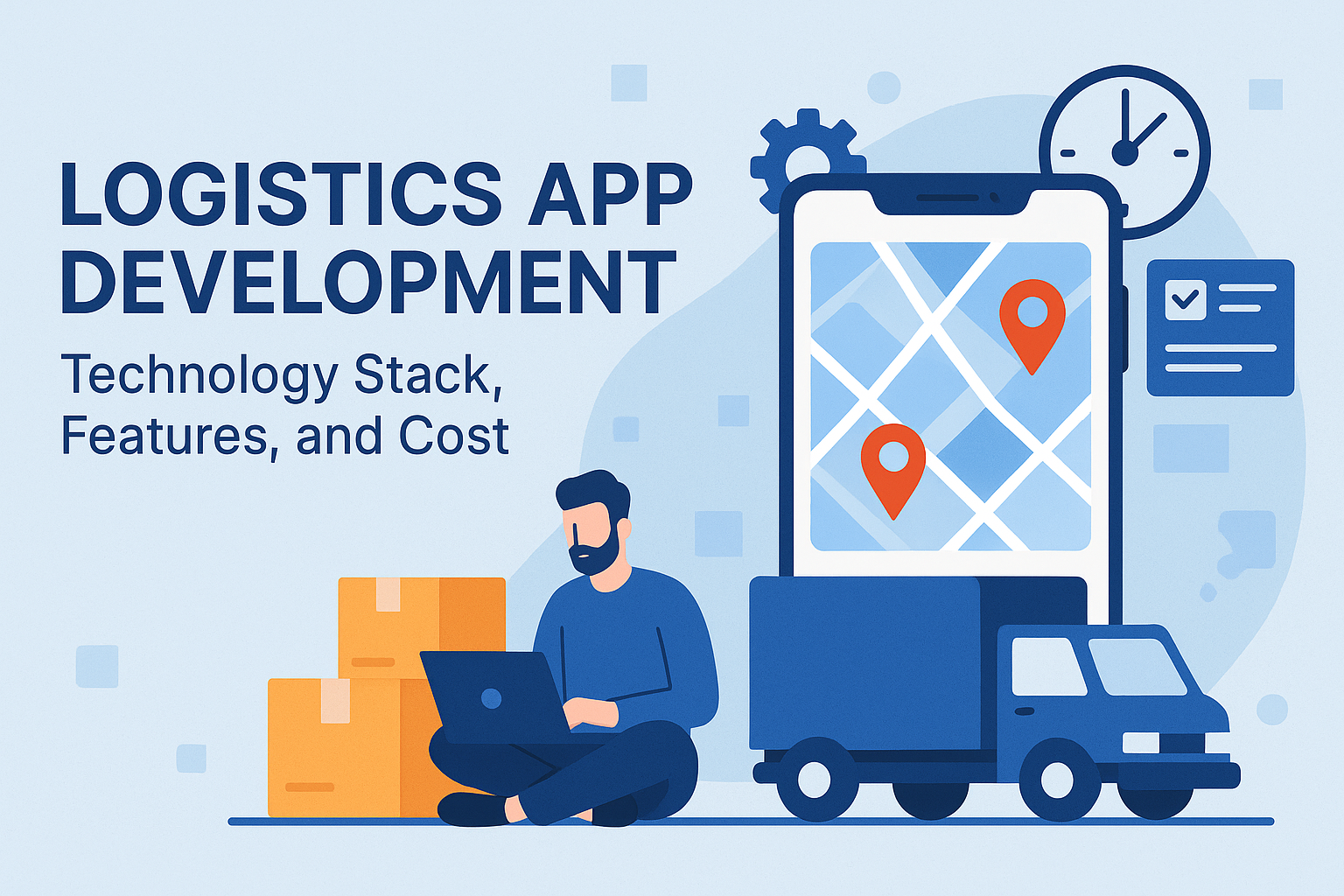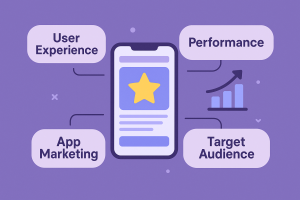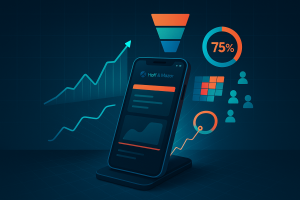Introduction: The Booming Demand for Logistics App Development in the Modern Supply Chain Ecosystem
The global logistics industry has experienced a massive transformation in recent years, driven largely by digitization and mobile-first technology. As e-commerce accelerates and customer expectations evolve, businesses ranging from large-scale freight carriers to last-mile delivery services are increasingly turning to logistics apps for streamlined operations. Logistics app development is no longer a luxury; it is a strategic necessity for companies aiming to stay relevant, responsive, and profitable in the hyper-competitive delivery economy.
Whether you’re a startup founder hoping to disrupt logistics with technology or a traditional logistics business owner modernizing operations, understanding the process of developing a logistics app is essential. This guide provides a detailed roadmap to make informed decisions, from selecting the right technology stack and defining must-have features to estimating costs and hiring the right experts.
Let’s explore the full journey of logistics app development, its technical layers, core functionalities, design priorities, and financial implications.
Understanding the Core Value of a Logistics App in Today’s Digitally-Driven Marketplace
A logistics app serves as the digital backbone of modern delivery businesses. It provides a centralized platform for managing fleets, tracking deliveries in real time, optimizing routes, managing warehouses, and ensuring timely pickups and drop-offs. With the increasing need for operational efficiency, real-time insights, and customer satisfaction, logistics apps help reduce delays, cut costs, and increase transparency.
Moreover, such applications cater to multiple users, including drivers, warehouse staff, dispatchers, and customers. This multifunctional capability makes them invaluable across the entire logistics chain. The rise in demand for these applications has resulted in a surge in businesses seeking to find professional app design agency partners that specialize in scalable, custom-built logistics platforms.
Choosing the Right App Design Company: Why Expertise in Logistics Matters More Than Ever
The first step in logistics app development is choosing an experienced and capable app design company. Logistics is not just about moving goods it involves intricate workflows, government regulations, fleet management, and data security. An app design agency unfamiliar with the logistics domain may miss key features that are industry-standard.
When you’re scouting for developers, prioritize agencies that have prior experience in building logistics or fleet management apps. Ask for case studies, client references, and demos of previously developed platforms. Whether you’re partnering with an iOS app development company or a full-stack app development house, ensure they understand the unique challenges of logistics tech.
More importantly, it’s advisable to find professional app design agency teams that offer end-to-end solutions from UI/UX design to post-deployment support. This ensures consistency, reduces communication gaps, and results in faster project completion.
Defining the Right Technology Stack for Logistics App Development: Back-End, Front-End, and Everything In Between
Choosing the correct technology stack is vital to building a stable, secure, and scalable logistics application. Your app’s stack will depend on factors like platform type (iOS, Android, web), real-time data needs, integration capabilities, and budget.
Back-End Technologies:
- Node.js / Django / Laravel – For fast and scalable server-side logic
- MongoDB / PostgreSQL / MySQL – Depending on structured or unstructured data requirements
- Firebase / AWS Amplify – For real-time updates and cloud-based architecture
Front-End Frameworks:
- React Native / Flutter – For building cross-platform mobile apps with a single codebase
- Swift / Kotlin – For native iOS and Android app development
Real-Time Tracking and Maps:
- Google Maps API, Mapbox, and OpenStreetMap for GPS and geolocation
- WebSockets or Firebase for real-time data transfer
Other Tools:
- Stripe or Razorpay for payments
- Twilio for communication and SMS
- OAuth 2.0 for secure authentication
This tech stack allows for a robust logistics app that is responsive, real-time, and scalable, giving your users a seamless experience.
Designing the User Interface and User Experience for Logistics Applications: Functionality Meets Aesthetics
In the world of logistics, function often outweighs form. However, ignoring app design can lead to a clunky user experience, wasted time, and user dissatisfaction. A clean, intuitive interface is essential, especially when your app will be used by drivers on the road, warehouse staff with limited tech experience, and managers needing real-time dashboards.
Partnering with an experienced app design company ensures that your app is both usable and beautiful. With the right app design tools, your app will feature:
- Real-time dashboards with dynamic data visualizations
- Driver-friendly navigation with voice-assisted features
- Warehouse inventory management panels
- Alert systems and push notifications
- Clean design with readable fonts and intuitive icons
These features empower users across different roles, making logistics operations seamless, even at scale.
Must-Have Features in a Logistics App: Building a Platform That Solves Real Problems
A well-designed logistics app includes a comprehensive set of features that cater to every stakeholder. The key is to focus on problem-solving—streamlining what would otherwise be manual, tedious processes.
1. Real-Time Tracking and GPS Integration
This is the core of any logistics app. It provides live updates on fleet movement, delivery status, and location sharing for customers and managers.
2. Route Optimization
This feature helps drivers choose the fastest and most efficient routes, reducing fuel costs and improving delivery times.
3. Order and Delivery Management
Includes barcode scanning, proof of delivery (POD), digital signatures, and real-time updates for customers.
4. Fleet and Vehicle Management
Track vehicle usage, maintenance schedules, fuel consumption, and driver logs.
5. Warehouse Management Integration
Sync warehouse stock levels with the delivery system, allowing for accurate inventory tracking and quick dispatching.
6. Analytics and Reporting
Generate reports on delivery times, delays, fleet performance, and customer satisfaction.
7. Admin Dashboard
A central control panel for managing users, monitoring operations, and assigning tasks.
By implementing these features, your app becomes a one-stop solution for logistics efficiency.
Cross-Platform vs Native Development: What Works Best for Logistics?
One of the early decisions in development is choosing between native and cross-platform frameworks. A native app is built specifically for iOS or Android using languages like Swift or Kotlin. It offers high performance but requires separate codebases for each platform.
Cross-platform frameworks like React Native and Flutter allow you to build a single app that works on both platforms. These are especially useful for startups or small logistics firms aiming for fast deployment with limited resources.
When working with an iOS app development company, discuss the pros and cons of both approaches based on your target audience, timeline, and budget. While native apps may offer better performance and more robust integrations, cross-platform apps provide a faster go-to-market solution, particularly when paired with powerful app design tools.
Cost of Logistics App Development: What to Expect in Terms of Budget
One of the most common questions asked by business owners is: “How much will this cost?” The answer varies based on app complexity, team size, tech stack, and region.
Here’s a rough breakdown of development costs:
- Simple Logistics App (Basic Tracking, Orders, and Routes): $20,000 – $35,000
- Mid-Level App (Driver Panel, Admin Panel, Warehouse Features): $35,000 – $70,000
- Enterprise-Level App (Custom Dashboards, AI-Driven Routing, Integration with IoT Devices): $70,000 – $150,000+
Working with an offshore yet reputable app design company or hiring an affordable iPhone app development services provider can significantly reduce costs. However, make sure affordability doesn’t compromise quality.
Always aim to find professional app design agency teams that offer a balance of cost-efficiency and technical expertise.
Post-Launch Maintenance and Scalability: The Hidden Cost of Growth
Many businesses overlook the fact that app development doesn’t end at launch. Continuous updates, bug fixes, security patches, and scalability improvements are necessary to keep the app functional and competitive.
Ensure your development partner includes maintenance support in your contract. Opt for an iOS app development company that provides monthly or quarterly updates, especially if you plan on scaling rapidly.
Scalability becomes critical when your user base grows. The architecture of your app should allow for adding new features, increasing user load, and expanding to new geographies. Discuss your scalability plans upfront with your app design agency to ensure the foundation is future-ready.
Case Studies and Success Stories: Real-World Impact of Logistics App Development
Several companies across the globe have successfully streamlined operations and boosted revenue through logistics apps.
- DHL and FedEx use AI-integrated apps for real-time route optimization.
- Uber Freight transformed trucking with a driver-first app interface.
- Amazon Logistics uses warehouse-linked delivery apps for instant inventory updates.
These success stories emphasize the importance of combining advanced app design tools with domain expertise. Partnering with the right iOS app development company can help you recreate or even surpass these models for your specific niche.
Final Thoughts: Investing in the Right Logistics App for Long-Term Efficiency and Growth
Building a logistics app is a strategic move, not just a technical project. From defining user-friendly features and selecting the ideal tech stack to estimating costs and choosing the right app design company, every decision will directly influence your business performance.
Whether you want to automate delivery tracking, optimize routes, reduce overhead, or scale across regions, a custom logistics app will give you a competitive edge. To succeed, it’s critical to find professional app design agency partners who understand both technology and the intricacies of logistics operations.
Make sure to collaborate with an iOS app development company that offers not just development but also strategic consulting, ongoing support, and affordable iPhone app development services tailored to your business model.







